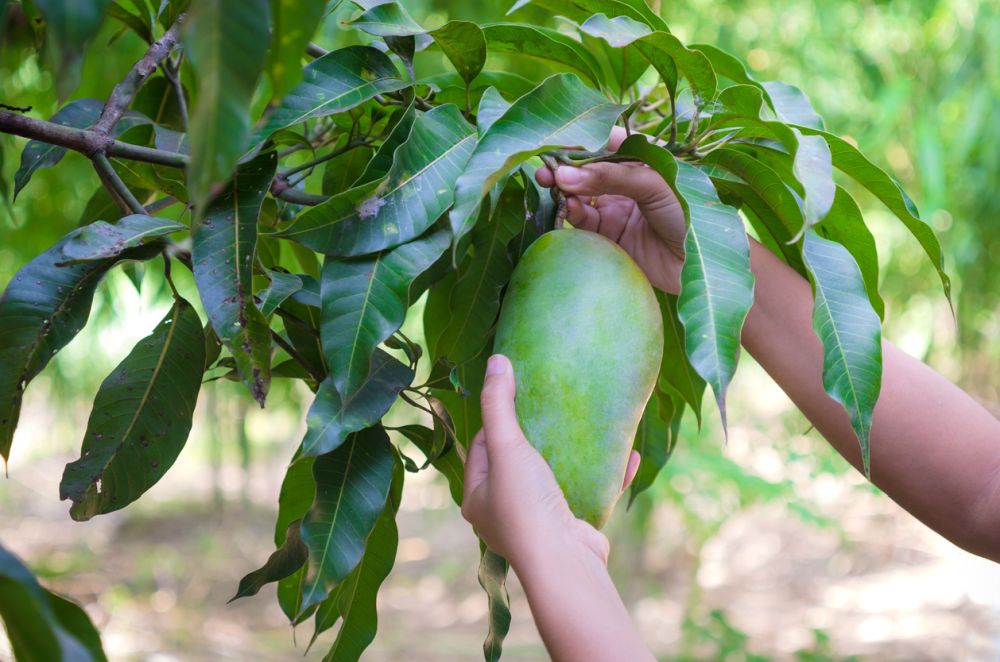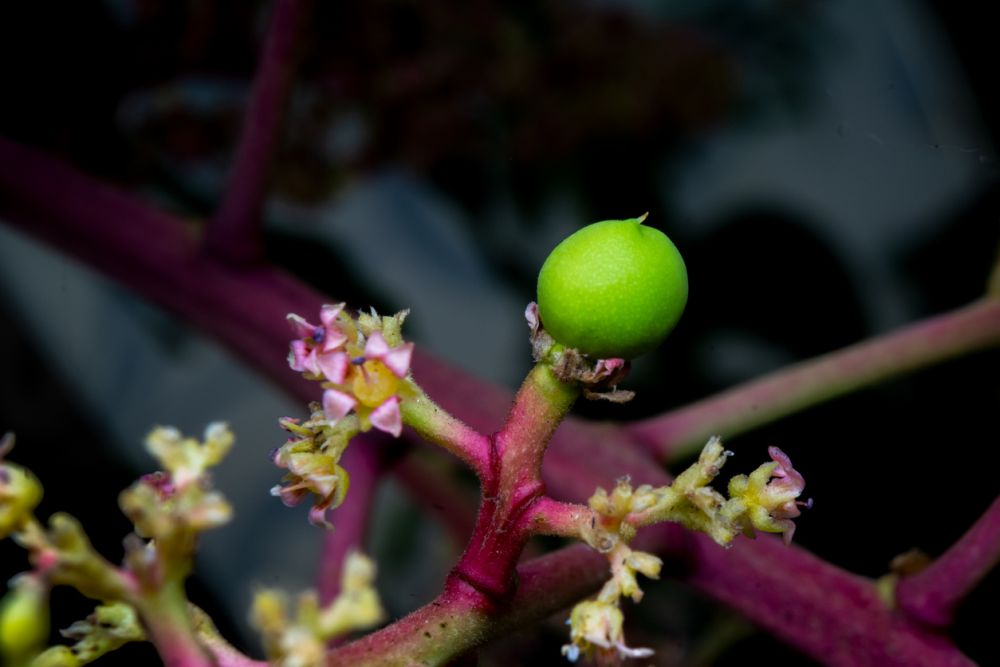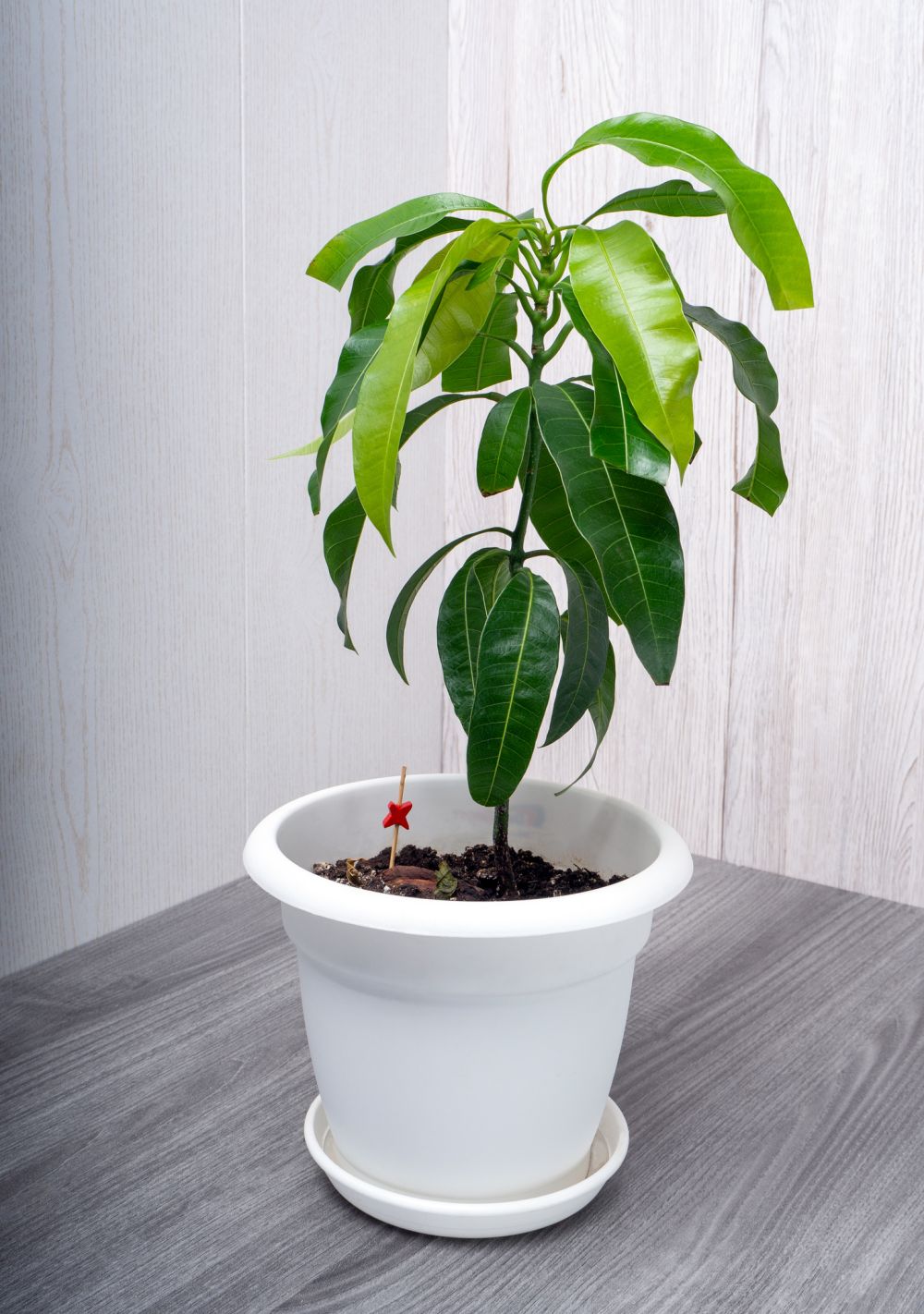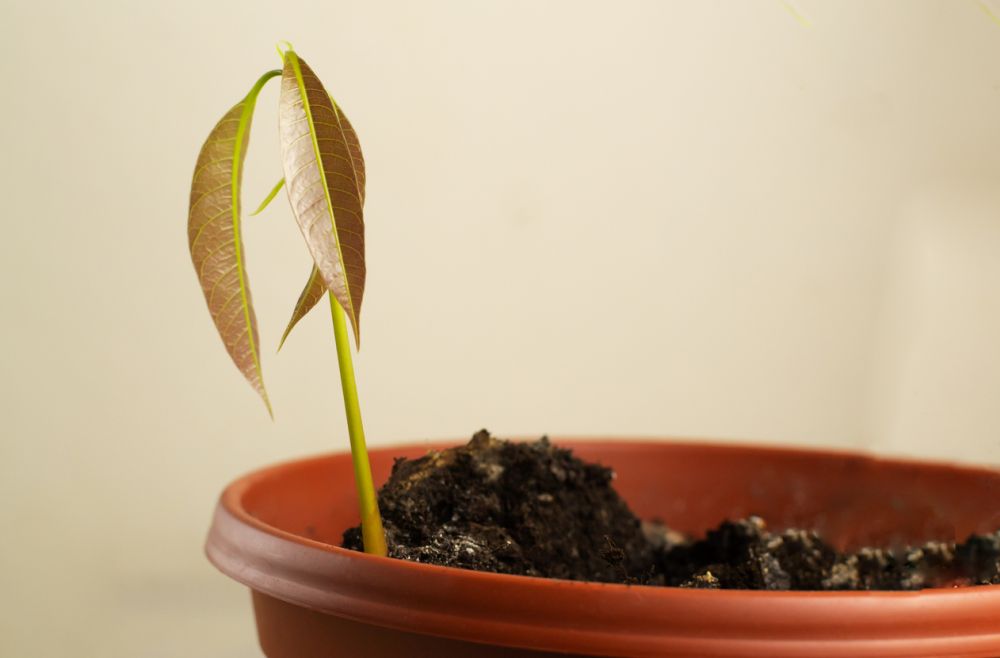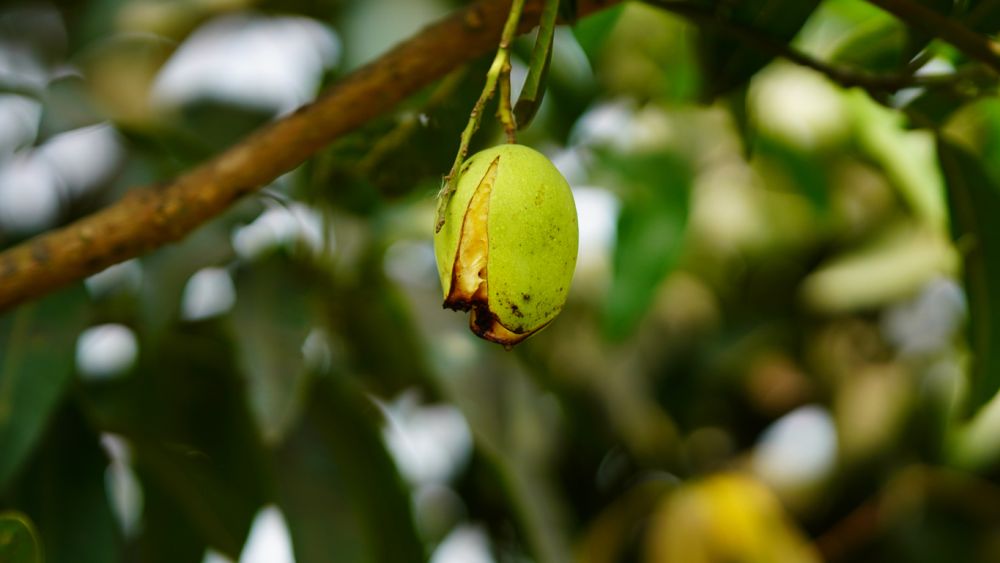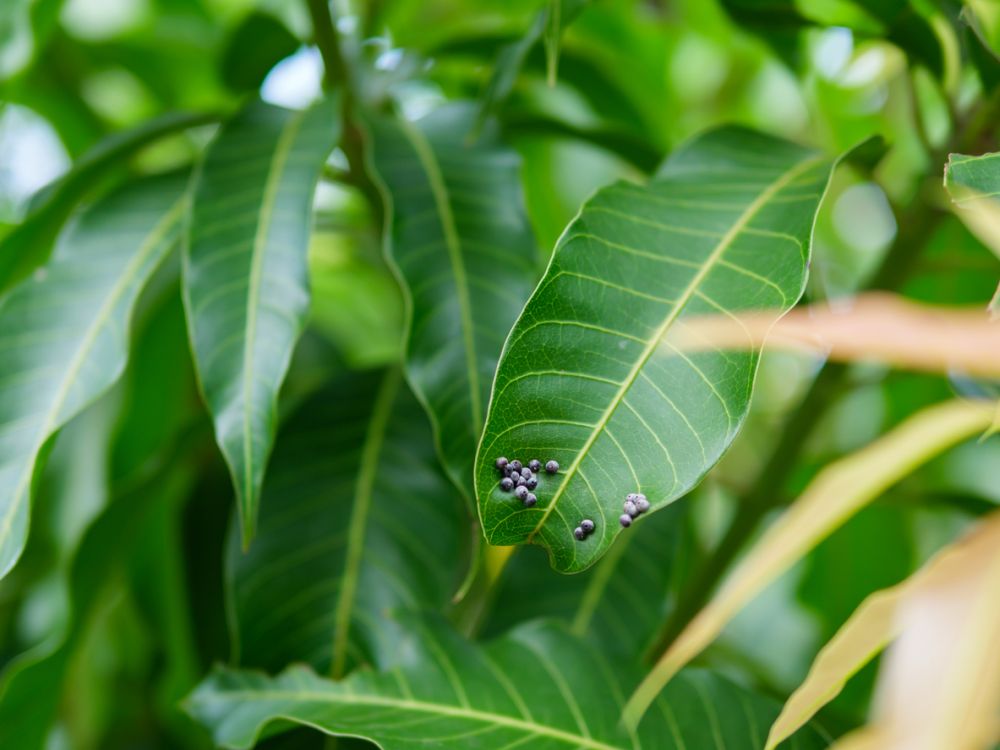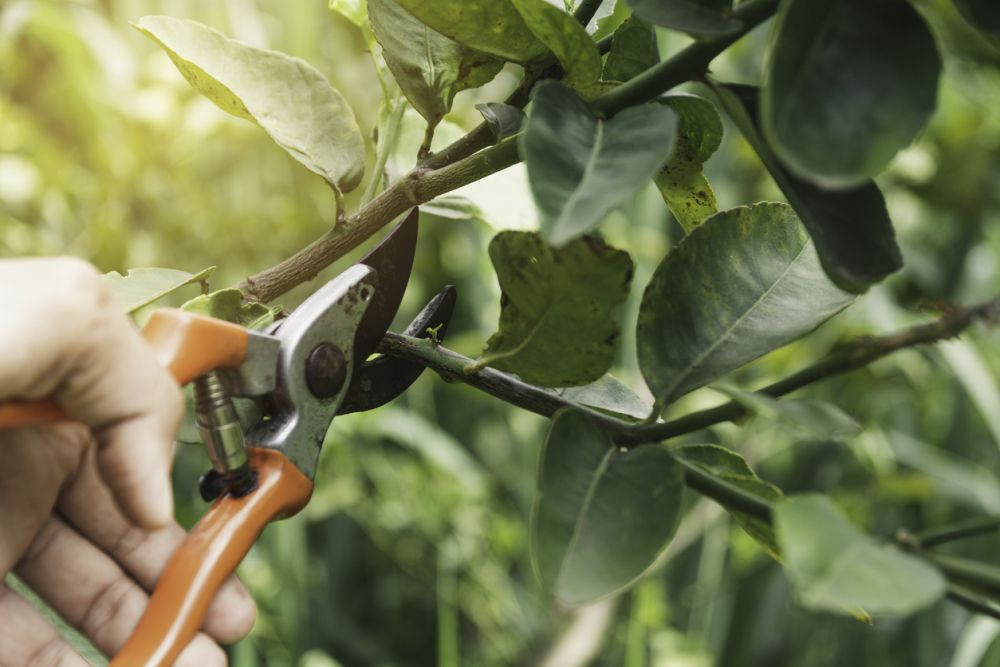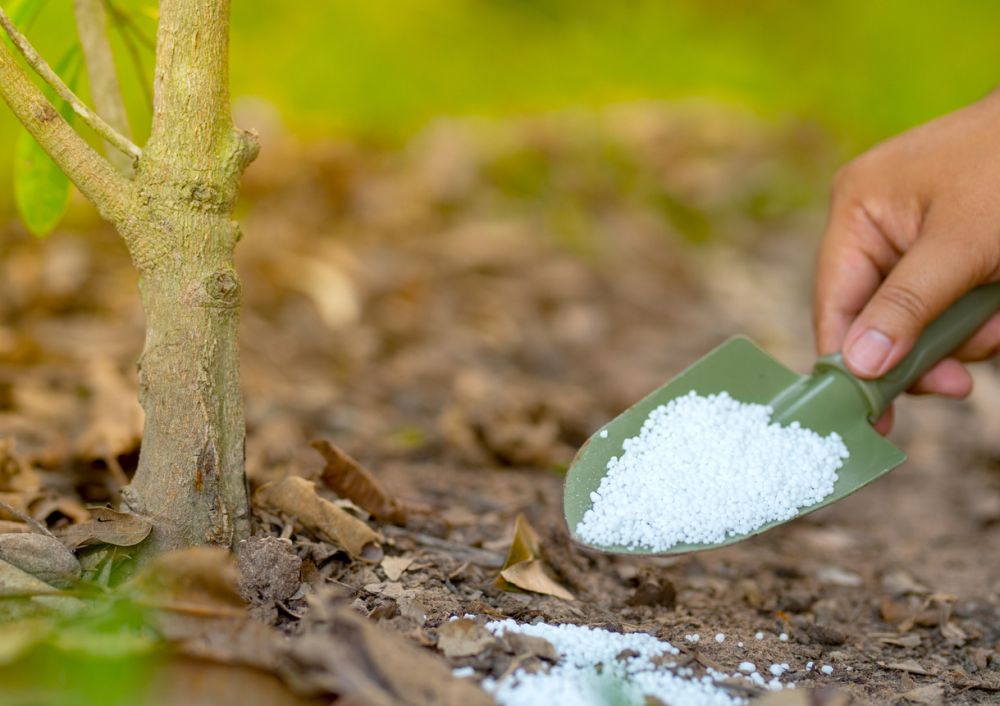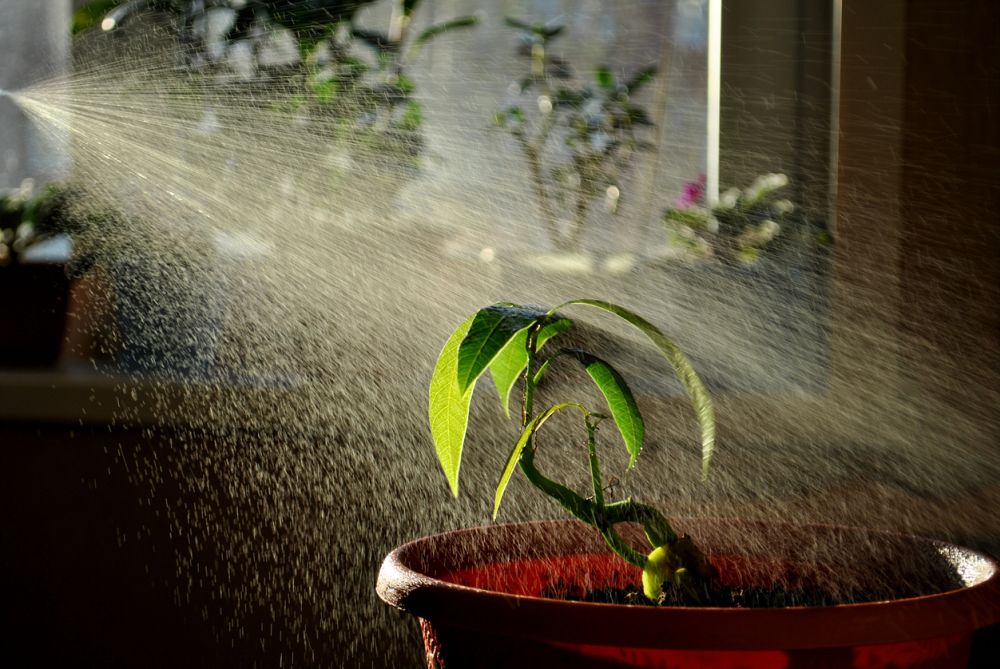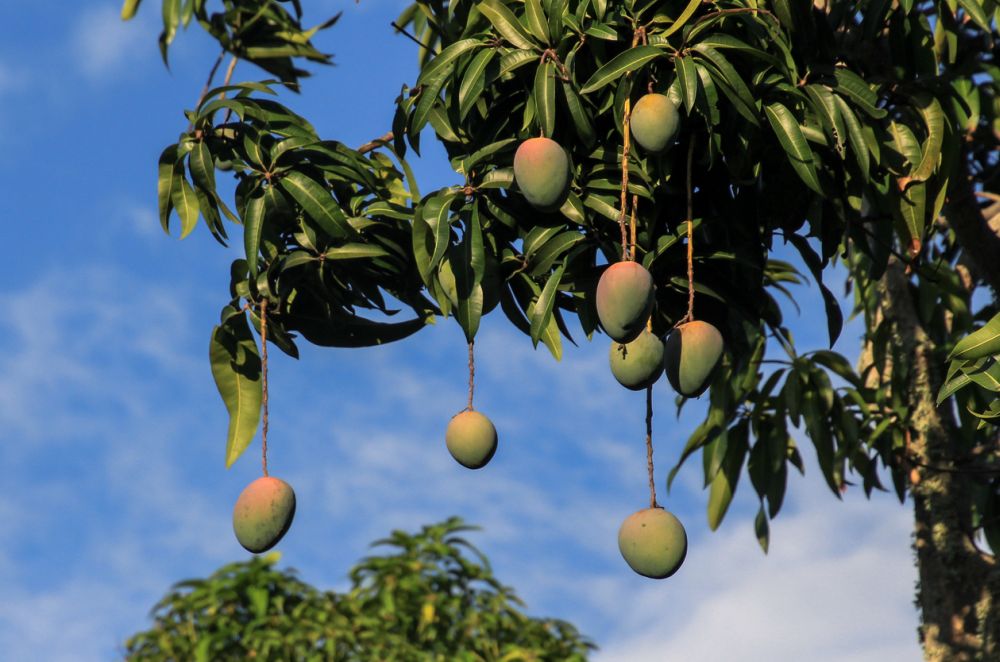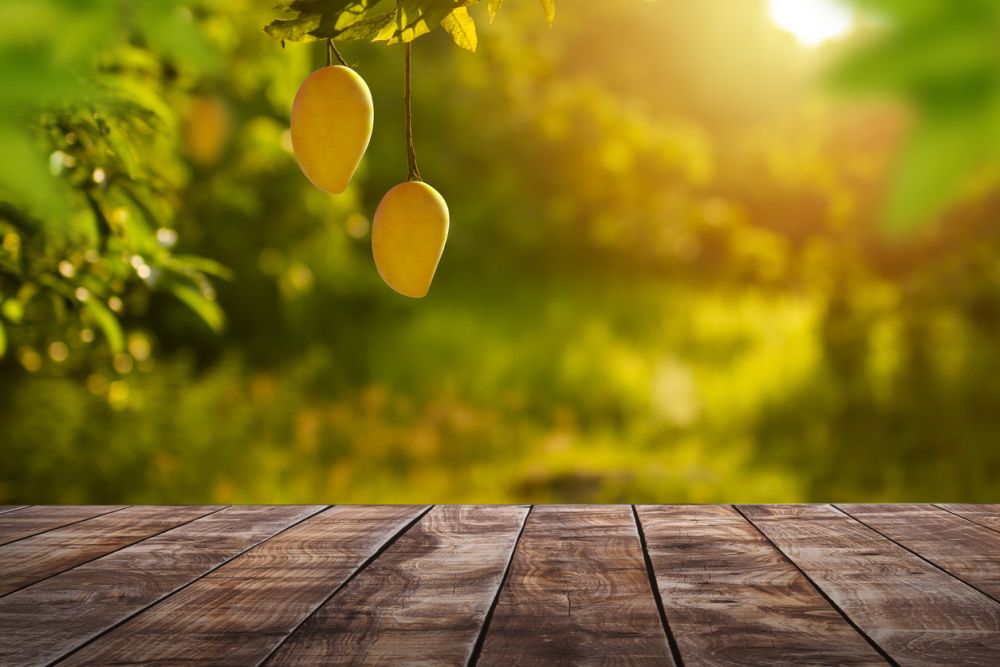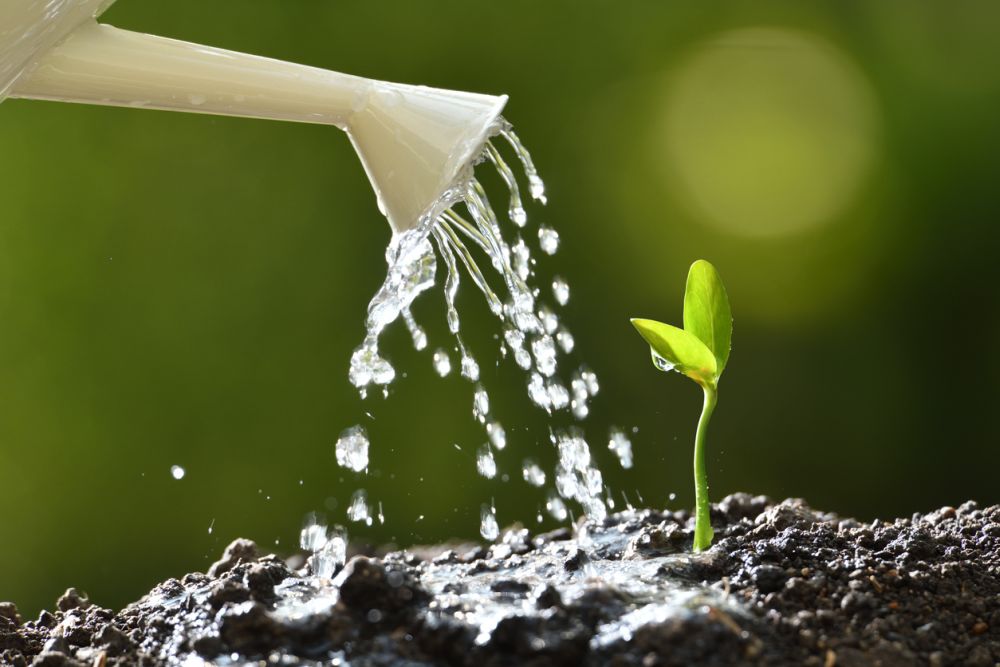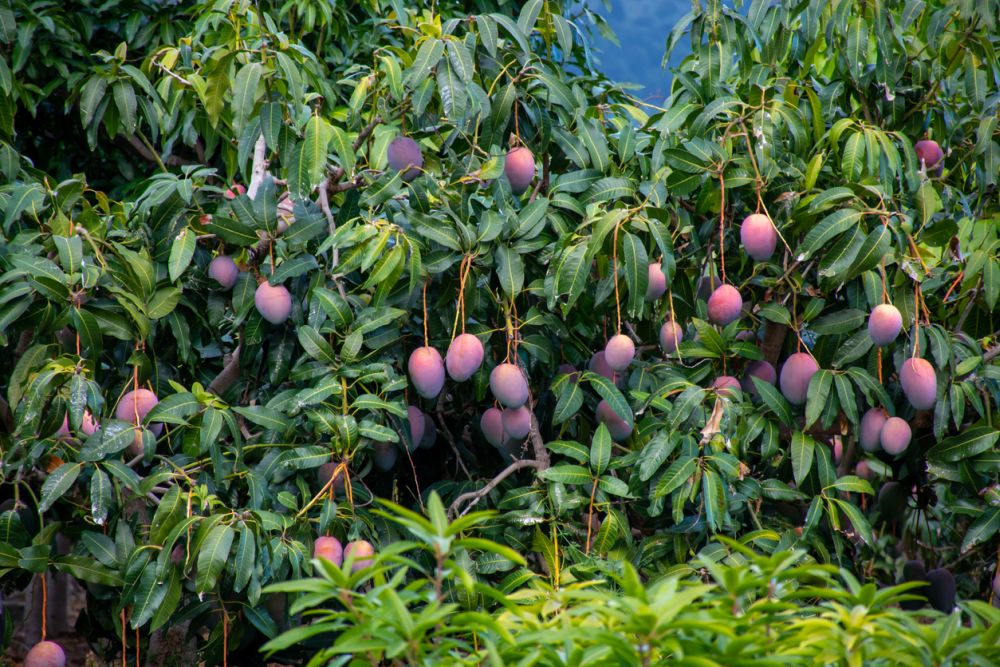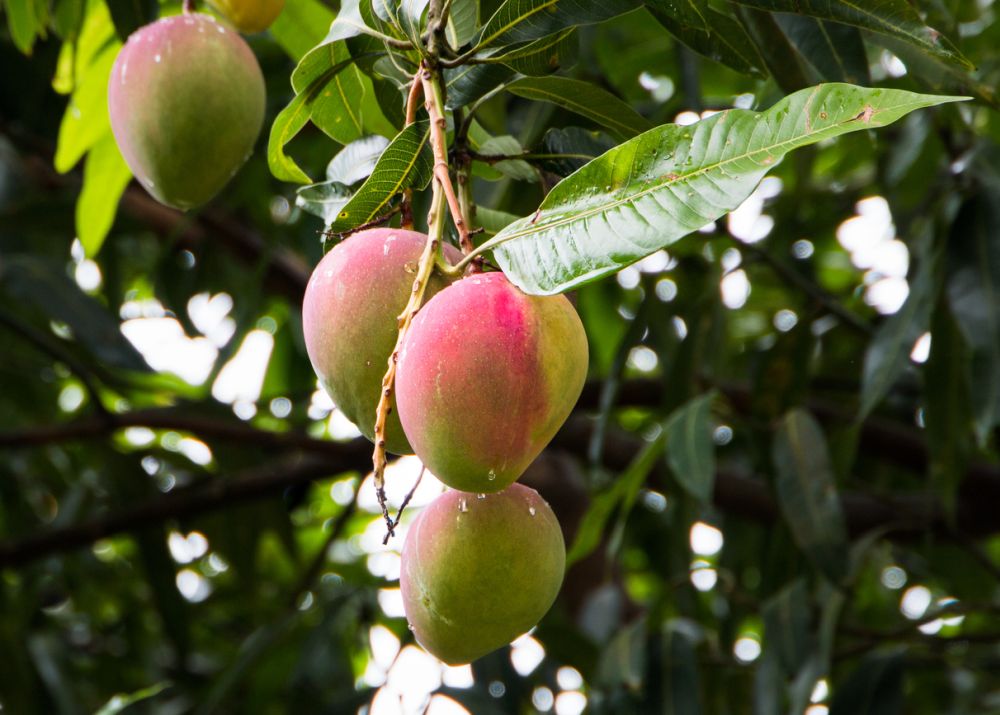How to Grow Mango from Seed in a Pot or Water (Caring & Harvesting Tips)
Growing a tree in your garden or backyard is a rewarding experience, especially one that bears delicious fruit like mango.
Read on to learn how to grow mango from seed in a pot or in water, including caring and harvesting tips.
Table of Contents
Start by learning some quick facts about mango trees as well as their caring requirements. This way, you will be able to make an informed decision on whether you meet the proper conditions for growing a mango tree at home.
Quick Facts About Mango Trees
- The scientific name for mango is Mangifera indica.
- While the precise origin of the mango is unknown, it’s widely believed that it appeared somewhere between northwestern Myanmar, Bangladesh, and northeastern India over 5,000 years ago.
- Mango is the national fruit of the Phillippines, India, and Pakistan. It’s also the national tree of Pakistan.
- Mango belongs to the same family as cashew, pistachio, poison ivy, and poison oak (Anacardiaceae family).
- The mango tree can grow up to 100 ft (30 m) high with a canopy of over 35 ft (10 m).
- There are two types of mango – Indian and Southeast Asian – and more than 500 mango varieties.
- Mangoes vary in size, shape, color, and flavor, depending on the variety.
- The roots of the mango tree can descend to a depth of almost 20 ft (6 m) in outdoor environments.
- Mango tree leaves are evergreen, have a simple shape with alternate patterns, and can reach sizes of almost 14 inches (35 cm). The leaves make mango plants ideal for indoor decorations since they start orange-pink when they’re young.
- Each flower of the mango tree has five white petals, emits a sweet fragrance, and is produced in terminal panicles.
- Mango trees typically live more than 100 years, producing fruit even when they’re old. The ones planted from seeds start producing fruit after approximately 8 years, while the ones planted from saplings need about 5 years to bear fruit.
- The fruit peel of mango contains urushiol, an allergenic. Meanwhile, the wood of the mango tree produces phenol. Both urushiol and phenol can trigger contact dermatitis, especially in people who have been exposed to other members of theAnacardiaceae family.
- Eating fruit peels can fight diabetes and several types of cancer (colon, breast, brain, and others) since the peels contain powerful antioxidants (mangiferin, norathyriol, and resveratrol).
- Mango is a rich source of fiber, folate, copper, and vitamins A, B6, and C.
In the next section, check out the requirements and caring tips for growing mango trees.
Mango Tree Care
Before learning how to grow mango from seed, check out this section since it teaches you everything you need to know about caring for your mango tree.
It’s essential to meet requirements for watering, light, temperature, humidity, and soil, to help your mango tree grow and thrive to the fullest. You can also learn about growing a mango tree in a container, fertilizing, pruning, overwintering, pests, and diseases.
Only after ticking the boxes for mango tree care, you will be able to tell if you can successfully grow a mango tree in your region.
Let’s start with the watering requirements of the mango tree.
Watering
Check out the following tips for watering your mango tree:
- A freshly planted mango tree should be watered every 2 – 3 days in the summer. Reduce watering to once every 2 weeks in the fall when the mango tree begins to grow.
- Mango trees shouldn’t be watered at all for about 2 months before flowering.
- Due to their deep roots, it’s essential to water mango trees thoroughly so that the moisture can reach the lowest parts of the roots. Water the trees again only when 3 in (7.6 cm) of topsoil is dry.
- Container-bound mango trees need more water than garden-bound mango trees.
In the next section, learn about the light requirements of the mango tree.
Light
Read the following tips for providing your mango tree with adequate light:
- Mango trees are native to tropical regions, so they need plenty of sunlight throughout the day.
- Most professional textbooks recommend exposing mango trees to at least 8 hours of direct sunlight daily.
- Failing to provide your mango tree with adequate lighting can significantly affect its flowers and fruits.
- Pick a nice spot in your garden for planting your mango tree, so that it won’t get any shade during the day.
- If you grow your mango tree in a container indoors, place the pot near a south-facing window.
In the next section, discover the temperature requirements of the mango tree.
Temperature
Check out the temperature requirements of the mango tree:
- Since we have already established in the previous section that mango trees need sunlight all day long, it’s easy to understand why the surrounding temperatures must be relatively high.
- A mango tree should be planted in areas where temperatures never drop below 40 degrees F (4.4 degrees C), or the flowers and small fruit will die.
- Young mango trees are sensitive to cold weather, taking severe damage and even dying out completely at around 30 degrees F (-1 degrees C).
- Full-grown mango trees are hardier than young ones and can withstand low temperatures of around 25 degrees F (-4 degrees C) but briefly.
- The ideal temperature for growing mango trees is 80 – 100 degrees F (27 – 37 degrees C). If winter frosts are typical in your region, it’s best to grow mango trees in containers and bring them indoors.
In the next section, discover the humidity requirements of the mango tree.
Humidity
Mango plants require high humidity compared to other fruit trees: around 50% humidity.
If you live in an area with humidity lower than 50%, help your mango tree by misting it daily.
In the next section, learn about the soil requirements of the mango tree.
Soil
Mango trees preferloamy, sandy, and well-drained soils, although they do well with most soil types.
The soil should have a 5.5 – 7.5 pH level since mango trees can handle slightly alkaline, neutral, or even slightly acidic soils.
In the next section, find out the best way to grow your mango tree in a container.
Container
If you grow your mango tree in a container, maximize drainage by laying some gravel or even pieces of broken pottery on the bottom of the pot.
You can improve the drainage of the soil by mixing it with peat and organic fertilizer.
In the next section, discover the right way to fertilize your mango tree.
Fertilizing
Check out the following tips for fertilizing your mango tree:
- Use a well-balanced, slow-release fertilizer, although this depends on the soil’s innate fertility.
- A good fertilizer for mango trees is richer in potassium than nitrogen or phosphorus (6-6-6 and 8-3-9-2).
- The best time to fertilize your mango tree is before it starts flowering and right after harvesting the fruits but never in-between.
- A mango tree must grow for 5 – 8 years before the first harvest, so don’t bother fertilizing it too much unless you want a big tree.
- Don’t overfertilize your mango trees, or they will focus their nutrients on growing the leaves instead of the fruits.
In the next section, learn how to prune your mango tree.
Pruning
Read the next tips for pruning your mango tree:
- Pruning helps mango trees by removing diseased, damaged, or dead branches.
- It’s recommended to prune your mango tree every year to improve flowering and fruiting.
- The best time for pruning your mango tree is summer or early fall.
- Prune the mango tree by trimming the canopy branches to improve airflow and prevent the tree from creating a shade for itself.
- If you plan to harvest mangos, prune the central shoot of the tree to encourage lateral growth. This way, the fruits will be within your reach.
In the next section, learn about the overwintering risks of the mango tree.
Overwintering
We have established in an earlier section that mango trees are sensitive to cold temperatures since they’re tropical. As such, it’s crucial to deal with overwintering issues, particularly if you live in the northern hemisphere.
Check out the following tips for handling mango tree overwintering problems:
- If you live in a region with harsh winters, it’s best to grow your mango tree in a container unless you have a greenhouse.
- Bring the potted mango tree inside before the outside temperature drops below 50 degrees F (10 degrees C).
- Place the potted mango tree near a south-facing window or use grow lights.
- Keep your mango tree away from drafts.
In the next section, learn about the common pests of the mango tree and how to deal with them.
Pests
Mango trees can suffer from a wide variety of pests, most of them being insects:
- Aphids
- Mango leafhopper
- Fruit piercing moths
- Mango seed weevil
- Fruit-spotting bug
- Mango shoot caterpillar
- Helopeltis
- Mango tip borer
- Mealybugs
- Mango stem miner
- Mites
- Queensland fruit fly
- Red-banded mango caterpillar
- Spiraling whitefly
- Red-banded thrips
Signs of pest infestation includewebs and white fuzzy residue.
To get rid of mango tree pests, check out the following tips:
- Use a garden hose to remove soft-bodied pests (like aphids) from the leaves and branches of your mango tree.
- Create a natural cleaning solution made of 1 quart (1 l) of water, 1 tbsp of vegetable oil, and 1 tsp of dish detergent. Place the mixture in a spray can and apply it to the affected areas of your mango tree.
- When dealing with severe pest infections, use neem oil.
- Invite natural predatory insects into your garden, such as ladybugs or praying mantises, since they will discover and feed on the pests of the mango tree. To do this, plant herbs like cilantro or dill, or move these potted herbs next to your mango trees. However, skip using natural or chemical solutions to deal with pests since they would also kill the good bugs.
- Some insects like aphids leave honeydew behind on the mango tree, which attracts more pests. To prevent honeydew, wrap the mango tree trunk with a tree wrap and coat it with a grease band or tree barrier glue to control pest repopulation.
- If natural methods fail, spray the pests and affected areas with a common insecticide.
- Test any natural or chemical-based products on a single leaf of the mango tree to check the tree’s tolerance; some mango tree varieties are more sensitive than others.
In the next section, learn about diseases that commonly affect mango trees and how to treat them.
Diseases
When it comes to diseases, fungusis the biggest concern of mango trees, as for other fruit trees.
Common fungi that affect mango trees include:
- Apical bud necrosis
- Bacterial black spot
- Bacterial flower disease
- Mango malformation disease
- Phytophthora fruit rot
- Powdery mildew
- Stem end rot
Signs of fungi infestation are leaves and fruits that start developing spots.
To protect your mango trees from common pests and fungi infections, check out these tips:
- Plant a fungus-resistant mango variety, such as Malika, M-4, Honey Kiss, Pickering, Super Julie, Peach Cobbler, Neelum, and Angie.
- Remove and burn all fallen leaves.
- Prune your mango tree well to remove any damaged parts and allow airflow between branches.
- Sterilize your trimming and pruning tools between uses.
- Create a plan for regularly applying fungicides to your mango trees and stick to the plan.
- Use mancozeb, copper hydroxide and sulfate, prochloraz, and azoxystrobin fungicides.Your mango tree will naturally develop resistance to chemical fungicides, so it’s best to alternate them.
- Avoid using chemical-based products if the temperature is over 90 degrees F (32 degrees C) since they might harm the mango tree due to excess heat.
Now that you know everything it takes to grow a mango tree, proceed to the next section to learn how to grow mango from seed in a container.
How to Grow Mango from Seed in a Pot
If you wish to learn how to grow mango from seed in a container, check out the following steps.
Step 1: Gather your supplies
- Bag of potting mix
- Gravel
- Flower pot with proper drainage holes and a saucer
- Ripe mango
- Paper towels or tea towels
- Plastic bag or container
- Soft scrub
- Watering can
- Water
Step 2: Prepare the mango seed
- Peel the mango of all its pulp and set aside the husk.
- Use the soft brush to remove any stringy bits still clinging to the husk.
- Wrap the mango seed in your paper towel or tea towel, and leave it to dry for 1 – 2 days.
- Once the husk is completely dry, cut the edges and open it to reveal the mango seed.
Step 3: Germinate the mango seeds
- Wrap the mango seed in a damp (not wet) paper towel or tea towel.
- Place the wrapped mango seed in the plastic bag or container.
- Store the bag or container somewhere dark and warm.
- Check on the mango seed once every 2 – 3 days. The average germination time for mango seeds using this method is about 5 weeks. Once the mango seed starts to swell and produce roots and shoots about 3 inches long, it’s time to plant it.
Step 4: Plant the sprouted mango seed
- Fill the bottom of the flower pot with gravel.
- Fill the pot with soil mix until there are 2 in (5 cm) between the topsoil and the rim of the pot.
- Water the soil thoroughly.
- Place the seed on the soil, then cover it with a layer of about 1 in (2.4 cm) of potting mix.
- Water the soil again. Your mango plant should start growing now.
Mango plants become small mango trees after 4-5 years. After that time, it will be necessary to transfer them to bigger pots. If you’re growing a dwarf variety of the mango tree, it won’t be necessary to transfer it to your garden since it can thrive in the container.
In the next section, discover an alternate way of growing mango from seed quicker: in water.
How to Grow Mango from Seed in Water
Mango seeds sprout twice as fast when growing in water, compared to growing in a pot. On the other hand, soaked seeds risk developing mold, so keep this in mind.
If you still want to learn how to grow mango from seed in water, follow the next instructions:
Step 1: Gather your supplies
- Bag of potting mix
- Gravel
- Flower pot with proper drainage holes and a saucer
- Ripe mango
- Glass jar
- Water
- Toothpicks
- Paper towel or tea towel
- Plastic bag or container
- Soft scrub
- Knife
Step 2: Prepare the mango seed
- Use the knife to cut the mango and separate the pulp from the husk.
- Use the soft brush to remove any extra pulp still clinging to the husk.
- Wrap the mango seed in a paper towel or tea towel, and let it dry for 1 – 2 days.
- Remove the mango seed inside the husk by using the knife to cut along the edges.
Step 3: Germinate the mango seed
- Fill the glass jar with water.
- Pierce the mango seed with two toothpicks, one on either side of the seed, about halfway up.
- Place the mango seed inside the jar of water so that the lower half is submerged; the toothpicks will prevent the seed from fully submerging.
- Change the water every week to prevent bacterial growth.
- Seeds should start swelling up, and shoots and roots will start appearing from both ends of the seeds. When they measure about 3 inches (7.6 cm), it’s time to plant them.
Step 4: Plant the sprouted mango seed
- Place gravel on the bottom of the flower pot.
- Add soil mix to the top until there are 2 in (5 cm) between the topsoil and the rim of the pot.
- Water the soil deeply.
- Plant the seed in the soil and cover it with about 1 in (2.4 cm) of potting mix.
- Water the soil again deeply again and wait for your mango plant to grow.
Now that you know how to grow mango from seed in a pot and in water, proceed to the next section to learn the tips and steps necessary for harvesting mango trees.
Harvesting Mango Trees
Learning how to grow mango from seed and then putting the plan into action can be quite fun. Especially when considering that you will be literally enjoying the fruits of your labor, having the satisfaction of tasting the delights of homegrown mango.
The following are tips you can check for mango harvesting time and signs that mangoes are ready for harvest:
- There’s no precise time for mango harvesting, especially since the harvesting season can last for several months.
- The best harvest time is determined byhow ripe each fruit is. It’s not uncommon to harvest a mango tree gradually.
- If you’re patient, waitingfor a mango to fully ripen is worth it. Sugars develop in mangoes to create the iconic sweet taste in the last few ripening weeks.
- To tell that mango is ready for harvest, check its coloring. A completely ripe fruit gains a large reddish blush, and the mango begins to bulge and look more rounded than before. Also, the fruit feels firm and full to the touch. And if you try tugging on it gently, it snaps off by itself.
How to Harvest Mangoes
When your mangoes are ready for harvest, follow the next steps:
- Take a pair of sharp gardening shears.
- Cut the fruit so that at least 4 in (10 cm) of the stem are left. If there’s not enough stem left, it will cause a sticky milk-like sap to be released, causing sap burn. Sap burn turns the fruit black, causes it to rot quickly, and reduces the time for storing and eating fresh mangoes.
- After harvesting the mangoes, trim the stem to about¼ in (6 mm) and put the stem down, allowing any excess sap to drain away.
- If you’re harvesting mangoes that aren’t fully ripe, you can speed up ripening by placing the mangoes in paper bags at room temperature (70 – 75 degrees F, or 21 – 23 degrees C). Ripening could take 2-8 days, depending on how advanced it is.
The next section provides you with more information about mango.
FAQ
This section gives you simple answers to common questions about mango.
Can dogs eat mango seeds?
No. It’s best to steer your canine friend away from mango seeds since they pose a choking hazard. Also, because mango is a stone fruit, its seed contains trace amounts of cyanide, which becomes dangerous if the seed is chewed or crushed.
What are the benefits of mango seeds?
When processed properly, mango seeds gain many health and cosmetic benefits: relieve cardiovascular diseases, make hair look healthier, help manage dandruff, help with diabetes, treat diarrhea, and skin treatments.
How big do mango trees get?
Mango trees can reach a height of 100 ft (30 m) or more with a canopy of 35 ft (10 m) or more, especially when fertilized regularly.
The next and final section summarizes the entire article on how to grow mango from seed.
Closing Thoughts
We have reached the end of our article. And we hope that we managed to do our job of teaching you everything there is to know about how to grow mango from seed.
As you may have noticed from our guide, growing a mango tree at home has its challenges. Most importantly, you need the right growing conditions, particularly when it comes to high temperatures. Also, growing mango trees requires patience and consistency.
All that patience and consistency pays off, though, since you will have a beautiful-looking tree that can live more than 100 years and continue bearing fruit toward the end of its life. As such, you can pass on your precious mango trees to your children.
Once your tree bears fruit, make sure to learn the proper technique for cutting mangoes so that you don’t make a mess everywhere.
Whenever you need a quick reminder, be sure to return to this article to check the growing process of the mango tree.
What’s your experience with growing mango trees? Share your story in the comments below!
